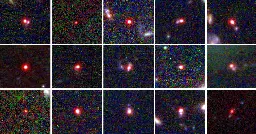
Happy birthday, Buster Keaton !🎂🥇❤️ Thank you for filling many people's lives with awesomeness.
https://www.youtube.com/watch?v=IT6M5Qgg2cY
https://www.youtube.com/watch?v=wNPtvunM1MY
https://www.youtube.com/watch?v=c-JuYvp9Rz4
https://fuckyeahbusterkeaton.tumblr.com/post/45292217635
Creative solutions to natural problems 😎
I've lived in a couple of apartments in Norway where they had a genius solution to the problems you mention (except the jet engine sound): it sends all odours to your NEIGHBOURS who have their kitchen right above or below yours 😎
(warning:it works both ways. So if your neighbours are cooking you better turn it on, and you better set it to superjet mode, because the strongest decides where the odours go.)
Sorry everyone but you're all missing the obvious. You see that APPARENTLY there's no WC in the bathroom? Well there you go. When you're done, close the door, and it's nicely mimetized as a drying cabinet 😎
This is an interesting take. Could you share some resources or links to follow this line of reasoning more in detail? Especially resources that are somewhat "noob-friendly". Cheers.
The discussion I stumbled upon, about this SSH app for Android, is really worrying. Will Google really manage to make it impossible to root your phone?
> But there's more to this, it's more complicated. In the Big Picture, Google has every incentive to make these changes — they lead to more security, and they're aligned with Google's corporate goals as well. > > - When talking to users, Google will emphasize control over hackers. > - When talking to stockholders, Google will emphasize control over users.
Edit: I disagree with "they lead to more security". That's not "security", let's not turn words upside-down.
I'm desperately looking for antonyms or somewhat opposites to "procedural". Checked on some antonym dictionaries but didn't find anything. More specifically it's about "procedural knowledge".
"Unplanned" or maybe "creative" could be some possibilities, but I wonder if something more appropriate could be found.
All possible suggestions greatly appreciated! Thank you!
Edit: Thanks everyone for the great suggestions! Together they led me to choose "exploratory" as somewhat opposite to "procedural". There's a huge variety of possibilities, but this one seems to fit my context well :)
I said 'fuck you" to Slack for similar reasons. Going to same the same to Discord now.
Giant black holes were supposed to be bit players in the early cosmic story. But recent James Webb Space Telescope observations are finding an unexpected abundance of the beasts.

cross-posted from: https://lemmy.ml/post/3347038
> Years before she was even sure the James Webb Space Telescope would successfully launch, Christina Eilers started planning a conference for astronomers specializing in the early universe. She knew that if — preferably, when — JWST started making observations, she and her colleagues would have a lot to talk about. Like a time machine, the telescope could see farther away and farther into the past than any previous instrument. > > Fortunately for Eilers (and the rest of the astronomical community), her planning was not for naught: JWST launched and deployed without a hitch, then started scrutinizing the early universe in earnest from its perch in space a million miles away. > > In mid-June, about 150 astronomers gathered at the Massachusetts Institute of Technology for Eilers’ JWST “First Light” conference. Not quite a year had passed since JWST started sending images back to Earth. And just as Eilers had anticipated, the telescope was already reshaping astronomers’ understanding of the cosmos’s first billion years. > A headshot of Eilers. She’s wearing a navy blue shirt. > > Before JSWT even launched, Christina Eilers, an astronomer at the Massachusetts Institute of Technology, started organizing a conference to discuss the telescope’s observations of the early universe. > > Courtesy of Christina Eilers > > One set of enigmatic objects stood out in the myriad presentations. Some astronomers called them “hidden little monsters.” To others, they were “little red dots.” But whatever their name, the data was clear: When JWST stares at young galaxies — which appear as mere red specks in the darkness — it sees a surprising number with cyclones churning in their centers. > > “There seems to be an abundant population of sources we didn’t know about,” said Eilers, an astronomer at MIT, “which we didn’t anticipate finding at all.” > > In recent months, a torrent of observations of the cosmic smudges has delighted and confounded astronomers. > > “Everybody is talking about these little red dots,” said Xiaohui Fan, a researcher at the University of Arizona who has spent his career searching for distant objects in the early universe. > > The most straightforward explanation for the tornado-hearted galaxies is that large black holes weighing millions of suns are whipping the gas clouds into a frenzy. That finding is both expected and perplexing. It is expected because JWST was built, in part, to find the ancient objects. They are the ancestors of billion-sun behemoth black holes that seem to appear in the cosmic record inexplicably early. By studying these precursor black holes, such as three record-setting youngsters discovered this year, scientists hope to learn where the first humongous black holes came from and perhaps identify which of two competing theories better describes their formation: Did they grow extremely rapidly, or were they simply born big? Yet the observations are also perplexing because few astronomers expected JWST to find so many young, hungry black holes — and surveys are turning them up by the dozen. In the process of attempting to solve the former mystery, astronomers have uncovered a throng of bulky black holes that may rewrite established theories of stars, galaxies and more. > > “As a theorist, I have to build a universe,” said Marta Volonteri, an astrophysicist specializing in black holes at the Paris Institute of Astrophysics. Volonteri and her colleagues are now contending with the influx of giant black holes in the early cosmos. “If they are [real], they completely change the picture.” > A Cosmic Time Machine > > The JWST observations are shaking up astronomy in part because the telescope can detect light reaching Earth from deeper in space than any earlier machine. > > We built this absurdly powerful telescope over 20 years. > > Grant Tremblay, Harvard-Smithsonian Center for Astrophysics > > “We built this absurdly powerful telescope over 20 years,” said Grant Tremblay, an astrophysicist at the Harvard-Smithsonian Center for Astrophysics. “The whole point of it originally was to look deep into cosmic time.” > > One of the mission’s goals is to catch galaxies in the act of forming during the universe’s first billion years (out of its roughly 13.8-billion-year history). The telescope’s initial observations from last summer hinted at a young universe full of strikingly mature galaxies, but the information astronomers could wring from such images was limited. To really understand the early universe, astronomers needed more than just the images; they hungered for the spectra of those galaxies — the data that comes in when the telescope breaks incoming light into specific hues. > > Galactic spectra, which JWST started to send back in earnest at the end of last year, are useful for two reasons. > > First, they let astronomers nail down the galaxy’s age. The infrared light JWST collects is reddened, or redshifted, meaning that as it traverses the cosmos, its wavelengths are stretched by the expansion of space. The extent of that redshift lets astronomers determine a galaxy’s distance, and therefore when it originally emitted its light. Nearby galaxies have a redshift of almost zero. JWST can handily make out objects beyond a redshift of 5, which corresponds to roughly 1 billion years after the Big Bang. Objects at higher redshifts are significantly older and farther away. > Volonteri is sitting in an auditorium, smiling at the camera. She’s wearing a black shirt. > > A theorist at the Paris Institute of Astrophysics, Marta Volonteri has long searched for ways to explain how black holes in the early universe bulked up so quickly. > > Renata Charikiopoulos > > Second, spectra give astronomers a sense of what’s happening in a galaxy. Each hue marks an interaction between photons and specific atoms (or molecules). One color originates from a hydrogen atom flashing as it settles down after a bump; another indicates jostled oxygen atoms, and another nitrogen. A spectrum is a pattern of colors that reveals what a galaxy is made of and what those elements are doing, and JWST is providing that crucial context for galaxies at unprecedented distances. > > “We’ve made such a huge leap,” said Aayush Saxena, an astronomer at the University of Oxford. The fact that “we’re talking about chemical composition of redshift 9 galaxies is just absolutely remarkable.” > > (Redshift 9 is mind-bogglingly distant, corresponding to a time when the universe was a mere 0.55 billion years old.) > > Galactic spectra are also perfect tools for finding a major perturber of atoms: giant black holes that lurk at the hearts of galaxies. Black holes themselves are dark, but when they feed on gas and dust, they rip atoms apart, making them beam out telltale colors. Long before JWST’s launch, astrophysicists hoped the telescope would help them spot those patterns and find enough of the early universe’s biggest and most active black holes to solve the mystery of how they formed. > Too Big, Too Early > > The mystery began more than 20 years ago, when a team led by Fan spotted one of the most distant galaxies ever observed — a brilliant quasar, or a galaxy anchored to an active supermassive black hole weighing perhaps billions of suns. It had a redshift of 5, corresponding to around 1.1 billion years after the Big Bang. With further sweeps of the sky, Fan and his colleagues repeatedly broke their own records, pushing the quasar redshift frontier to 6 in 2001 and eventually to 7.6 in 2021 — just 0.7 billion years after the Big Bang. > > The problem was that making such gigantic black holes seemed impossible so early in cosmic history. > > Like any object, black holes take time to grow and form. And like a 6-foot-tall toddler, Fan’s supersize black holes were too big for their age — the universe wasn’t old enough for them to have accrued billions of suns of heft. To explain those overgrown toddlers, physicists were forced to consider two distasteful options. > Fan is standing in front of an astronomical backdrop in which swirling galaxies are surrounded by sparkling stars. > > Decades ago, Xiaohui Fan, an astronomer at the University of Arizona, helped discover a string of quasars — bright supermassive black holes — whose extreme youth and size defied standard theories of black hole formation. > > Tod Lauer > > The first was that Fan’s galaxies started off filled with standard, roughly stellar-mass black holes of the sort supernovas often leave behind. Those then grew both by merging and by swallowing up surrounding gas and dust. Normally, if a black hole feasts aggressively enough, an outpouring of radiation pushes away its morsels. That stops the feeding frenzy and sets a speed limit for black hole growth that scientists call the Eddington limit. But it’s a soft ceiling: A constant torrent of dust could conceivably overcome the outpouring of radiation. However, it’s hard to imagine sustaining such “super-Eddington” growth for long enough to explain Fan’s beasts — they would have had to bulk up unthinkably fast. > > Or perhaps black holes can be born improbably large. Gas clouds in the early universe may have collapsed directly into black holes weighing many thousands of suns — producing objects called heavy seeds. This scenario is hard to stomach too, because such large, lumpy gas clouds should fracture into stars before forming a black hole. > > One of JWST’s priorities is to evaluate these two scenarios by peering into the past and catching the fainter ancestors of Fan’s galaxies. These precursors wouldn’t quite be quasars, but galaxies with somewhat smaller black holes on their way to becoming quasars. With JWST, scientists have their best chance of spotting black holes that have barely started to grow — objects that are young enough and small enough for researchers to nail down their birth weight. > > That’s one reason a group of astronomers with the Cosmic Evolution Early Release Science Survey, or CEERS, led by Dale Kocevski of Colby College, started working overtime when they first noticed signs of such young black holes popping up in the days following Christmas. > > “It’s kind of impressive how many of these there are,” wrote Jeyhan Kartaltepe, an astronomer at the Rochester Institute of Technology, during a discussion on Slack. > > “Lots of little hidden monsters,” Kocevski replied. > > Samuel Velasco/Quanta Magazine > A Growing Crowd of Monsters > > In the CEERS spectra, a few galaxies immediately leapt out as potentially hiding baby black holes — the little monsters. Unlike their more vanilla siblings, these galaxies emitted light that didn’t arrive with just one crisp shade for hydrogen. Instead, the hydrogen line was smeared, or broadened, into a range of hues, indicating that some light waves were squished as orbiting gas clouds accelerated toward JWST (just as an approaching ambulance emits a rising wail as its siren’s soundwaves are compressed) while other waves were stretched as clouds flew away. Kocevski and his colleagues knew that black holes were just about the only object capable of slinging hydrogen around like that. > > It always felt like at high redshift these quasars were just the tip of the iceberg. > > Stéphanie Juneau, astronomer at the National Science Foundation’s NOIRLab > > “The only way to see the broad component of the gas orbiting the black hole is if you’re looking right down the barrel of the galaxy and right into the black hole,” Kocevski said. > > By the end of January, the CEERS team had managed to crank out a preprint describing two of the “hidden little monsters,” as they called them. Then the group set out to systematically study a wider swath of the hundreds of galaxies collected by their program to see just how many black holes were out there. But they got scooped by another team, led by Yuichi Harikane of the University of Tokyo, just weeks later. Harikane’s group searched 185 of the most distant CEERS galaxies and found 10 with broad hydrogen lines — the likely work of million-solar-mass central black holes at redshifts between 4 and 7. Then in June, an analysis of two other surveys led by Jorryt Matthee of the Swiss Federal Institute of Technology Zurich identified 20 more “little red dots” with broad hydrogen lines: black holes churning around redshift 5. An analysis posted in early August announced another dozen, a few of which may even be in the process of growing by merging. > > “I’ve been waiting for these things for so long,” Volonteri said. “It’s been incredible.” > > But few astronomers anticipated the sheer number of galaxies with a big, active black hole. The baby quasars in JWST’s first year of observations are more numerous than scientists had predicted based on the census of adult quasars — between 10 times and 100 times more abundant. > Share this article > Copied! > > > > Newsletter > > Get Quanta Magazine delivered to your inbox > Recent newsletters > A portrait of Kocevski with a huge spiral galaxy in the background. The galaxy is blurred and Kocevski is in focus. > > Dale Kocevski, an astronomer at Colby College and a member of the CEERS team, was stunned to find that so many galaxies in the early universe appear to be anchored to voracious supermassive black holes. > > Gabe Souza > Introduction > > “It’s surprising for an astronomer that we were off by an order of magnitude or even more,” said Eilers, who contributed to the little-red-dots paper. > > “It always felt like at high redshift these quasars were just the tip of the iceberg,” said Stéphanie Juneau, an astronomer at the National Science Foundation’s NOIRLab and a co-author of the little-monsters paper. “We might be finding that underneath, this [fainter] population is even bigger than just the regular iceberg.” > These Two Go to Almost 11 > > But to catch glimpses of the beasts in their infancy, astronomers know they’ll have to push well beyond redshifts of 5 and look deeper into the universe’s first billion years. Recently, several teams have spotted black holes feeding at truly unprecedented distances. > > In March, a CEERS analysis led by Rebecca Larson, an astrophysicist at the University of Texas, Austin, discovered a broad hydrogen line in a galaxy at a redshift of 8.7 (0.57 billion years after the Big Bang), setting a new record for most distant active black hole ever discovered. > > But Larson’s record fell just a few months later, after astronomers with the JADES (JWST Advanced Deep Extragalactic Survey) collaboration got their hands on the spectrum of GN-z11. At redshift 10.6, GN-z11 had been at the faintest edge of the Hubble Space Telescope’s vision, and scientists were eager to study it with sharper eyes. By February, JWST had spent more than 10 hours observing GN-z11, and researchers could tell right away that the galaxy was an oddball. Its abundance of nitrogen was “completely out of whack,” said Jan Scholtz, a JADES member at the University of Cambridge. Seeing so much nitrogen in a young galaxy was like meeting a 6-year-old with a five o’clock shadow, especially when the nitrogen was compared to the galaxy’s meager stores of oxygen, a simpler atom that stars should assemble first. > > That’s when we realized we were staring right into the accretion disk of the black hole. > > Jan Scholtz, University of Cambridge > > The JADES collaboration followed up with another 16 or so JWST observing hours in early May. The additional data sharpened the spectrum, revealing that two visible shades of nitrogen were extremely uneven — one bright and one faint. The pattern, the team said, indicated that GN-z11 was full of dense gas clouds concentrated by a fearsome gravitational force. > > “That’s when we realized we were staring right into the accretion disk of the black hole,” Scholtz said. That fortuitous alignment explains why the distant galaxy was bright enough for Hubble to see in the first place. > > Extremely young, hungry black holes like GN-z11 are the exact objects astrophysicists hoped would resolve the quandary of how Fan’s quasars came to be. But in a twist, it turns out that not even the superlative GN-z11 is young enough or small enough for researchers to conclusively determine its birth mass. > > “We need to start detecting black hole masses at way higher redshift even than 11,” Scholtz said. “I had no idea I would be saying this a year ago, but here we are.” > A Hint of Heaviness > > Until then, astronomers are resorting to more subtle tricks for finding and studying newborn black holes, tricks like phoning a friend — or another flagship space telescope — for help. > > In early 2022, a team led by Ákos Bogdán, an astronomer at the Harvard-Smithsonian Center for Astrophysics, started periodically pointing NASA’s Chandra X-ray Observatory at a galaxy cluster they knew would be on JWST’s short list. The cluster acts like a lens. It bends the fabric of space-time and magnifies the more distant galaxies behind it. The team wanted to see if any of those background galaxies were spitting out X-rays, a traditional calling card of a voracious black hole. > > Over the course of a year, Chandra stared at the cosmic lens for two weeks — one of its longest observation campaigns yet — and collected 19 X-ray photons coming from a galaxy called UHZ1, at a redshift of 10.1. Those 19 high-octane photons most likely came from a growing black hole that existed fewer than half a billion years after the Big Bang, making it by far the most distant X-ray source ever detected. > > Jan Scholtz and Aayush Saxena are members of the JADES team, which analyzed the spectrum of a distant galaxy and found it to contain a vigorously feeding black hole. > > Clarissa Cahill (left); Tucker Jones > Introduction > > By combining the JWST and Chandra data, the group learned something strange — and informative. In most modern galaxies, almost all the mass is in the stars, with less than a percent or so in the central black hole. But in UHZ1, mass seems evenly split between the stars and the black hole — which is not the pattern astronomers would have expected for super-Eddington accretion. > > A more plausible explanation, the team suggested, is that UHZ1’s central black hole was born when a giant cloud crumpled into a humongous black hole, leaving little gas behind for making stars. These observations “could be consistent with a heavy seed,” said Tremblay, who is a member of the team. It’s “crazy to think about these giant, giant balls of gas that just collapse.” > It’s a Black Hole Universe > > Some of the specific findings from the mad spectra scramble over the last few months are bound to shift as the studies go through peer review. But the broad conclusion — that the young universe cranked out a host of giant, active black holes extremely quickly — is likely to survive. After all, Fan’s quasars had to come from somewhere. > > “The exact numbers and the details of each object remain uncertain, but it’s very convincing that we’re finding a large population of accreting black holes,” Eilers said. “JWST has revealed them for the first time, and that’s very exciting.” > > For black hole specialists, it’s a revelation that has been brewing for years. Recent studies of messy adolescent galaxies in the modern universe hinted that active black holes in young galaxies were being overlooked. And theorists have struggled because their digital models continually produced universes with far more black holes than astronomers were seeing in the real one. > > “I always said my theory is wrong and observation is right, so I need to fix my theory,” Volonteri said. Yet maybe the discrepancy wasn’t pointing to a problem with the theory. “Perhaps these little red dots were not being accounted for,” she said. > > Now that blazing black holes are turning out to be more than just cosmic cameos in a maturing universe, astrophysicists wonder if recasting the objects in meatier theoretical roles could alleviate some other headaches. > > After studying some of JWST’s first images, some astronomers quickly pointed out that certain galaxies seemed impossibly heavy, considering their youth. But in at least some cases, a blindingly bright black hole could be leading researchers to overestimate the heft of the surrounding stars. > > Another theory that may need tweaking is the rate at which galaxies churn out stars, which tends to be too high in galaxy simulations. Kocevski speculates that many galaxies go through a hidden-monster phase that sets up a star formation slowdown; they start off cocooned in star-crafting dust, and then their black hole grows powerful enough to scatter the star stuff into the cosmos, slowing star formation. “We might be looking at that scenario in play,” he said. > > As astronomers lift the veil of the early universe, academic hunches outnumber concrete answers. For as much as JWST is already changing how astronomers think about active black holes, researchers know that the cosmic vignettes revealed by the telescope this year are but anecdotes compared with what’s to come. Observing campaigns like JADES and CEERS have found dozens of likely black holes staring back at them from slivers of sky roughly one-tenth the size of the full moon. Many more baby black holes await the attention of the telescope and its astronomers. > > “All of this progress has been made in the first nine to 12 months,” Saxena said. “Now we have [JWST] for the next nine or 10 years.” > > Clarification August 14, 2023: > This article has been revised to clarify that Ákos Bogdán is the leader of the team that used the Chandra X-ray Observatory to study galaxy clusters. >
True science! Astrophysics is one of the few fields left in which they publish by listing the authors in alphabetical order. No "seniority" and similar bullshit that's politics and not science...
Thank you for finding this gem!
Yeah, they're like works of art - no need to keep adding strokes!
Cheers, I'll check that too.
Thank you for the heads-up. I've installed it and for now it's working OK. To be honest I don't mind that's unmaintained, if it works (I still use a 10-year old timer app that is just perfect for me, never found the like again).
About that, see comment by @Anafabula@discuss.tchncs.de in this thread. Apparently only the GPlay version is unmaintained.
Had not heard of Silence, Cheers!
Yeah there's a mystery about completely different availability policies by the developer in GPlay and in FDroid...
Agree about the security. I use Element/Matrix. I don’t use SMS regularly, but some people message me with that in emergency situations, for instance if they don’t have wifi or mobile data. It’s also still used to get temporary authentication codes.
Ha that's a fun mystery!!
Absolutely, don't take my post too literally as I'm not very acquainted with the Fediverse yet :)
I don't know who's the creator. Here's the app – you can also see the complaints from some users:
https://play.google.com/store/apps/details?id=com.simplemobiletools.gallery
Cheers, got it from F-Droid (another step in de-googling :)
I see, I didn't know about that, thank you. May I ask: is the instance where the community is hosted that should do this, or the instance(s) of the subscribers?
Please feel free to delete my post if it's pointless then!

Does anyone know of an open-source alternative to Google's "Messages" app, which takes care of SMS/text messages on my phone?
I was looking for open-source alternatives on PlayStore and F-Droid but can't really find anything – most apps seem to target some extra purpose than simply handling SMSs.
(Edit: I'd like to stay away from the "Simple Mobile Tools" line because I don't know if it's open source, and I don't like the way they promoted some apps – forcing users to update to pro and similar.)
Cheers!
It seems this community is being targeted by ad bots. I see all of them come from a @szmer.info instance (or?). Maybe it should be banned?
cross-posted from: https://lemmy.sdf.org/post/1819391
> I'm a member of the EFF, and its activities are great, but understandably have slightly more focus on USA-related matters. I say "but" just because I don't live in the USA. > > Are there similar foundations that operate and focus/prioritize more on an international level? I don't manage to find any, but probably I'm doing the wrong kind of search.
cross-posted from: https://lemmy.sdf.org/post/1819391
> I'm a member of the EFF, and its activities are great, but understandably have slightly more focus on USA-related matters. I say "but" just because I don't live in the USA. > > Are there similar foundations that operate and focus/prioritize more on an international level? I don't manage to find any, but probably I'm doing the wrong kind of search.
I'm a member of the EFF, and its activities are great, but understandably have slightly more focus on USA-related matters. I say "but" just because I don't live in the USA.
Are there similar foundations that operate and focus/prioritize more on an international level? I don't manage to find any, but probably I'm doing the wrong kind of search.

https://myanimelist.net/anime/56189/Grendizer_U
I wonder if anyone here ever saw the original...

Today I noticed that in the Page Info --> Permissions tab (which you access through padlock --> Connection secure --> More information beside a page's URL) there is an Override keyboard shortcuts permission setting, with default set to "Allow". Interesting, because some sites use shortcuts that I'd rather avoid.
I checked the Settings, but I see no entry to set the default to "Block". Is there some entry in about:config for this?
Cheers!
Gibbs sampling is a widely used Markov chain Monte Carlo (MCMC) method for numerically approximating integrals of interest in Bayesian statistics and other mathematical sciences. Many implementations of MCMC methods do not extend easily to parallel computing environments, as their inherently sequent...

Bayesian nonparametric methods include machine-learning and deep-learning methods as special cases, obtained by making quite coarse approximations to make the computation feasible. Using the fully fledged Bayesian method would give much more, but would take orders of magnitude more computational resources and time.
Papers like this, however, open up many more possibilities to use the full theory rather than approximations. I'm quite surprised to see that this paper is already four years old. I wonder if there's been any progress since then.

YouTube Video
Click to view this content.
This is a beautiful combination of video and song.




